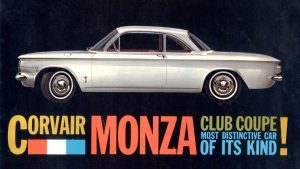
The sports car segment in the US wasn’t populated enough during the late 40s and the early 50s primarily due to wartime situations. By the end of the war, the soldiers returned home with many of them bringing European sports cars from brands such as MG, Healey, and Alfa Romeo. And this trend was noted well by General Motors’ styling chief, Harley Earl. As an enthusiast of sports cars himself, he convinced GM to build a sports car, and a secretive project was launched with the name, “Project Opel”.
Eventually, after the designing and prototype building phase was completed, the Corvette C1 or the first generation Corvette was launched in 1953. GM followed several cost-cutting measures by using mechanical parts and engines from the regular passenger vehicles from the brand. Due to lacking build quality and a few other mechanical issues, the sales figures and the popularity of the Corvette did not meet GM’s expectations.
What is on offer in terms of design?
In a sure-shot attempt at giving Americans a homegrown sports car, General Motors developed and built the Corvette which eventually went on to become a legend. Even to this day, the latest versions of the car are capable enough to take on several German rivals at a lower price tag, staying true to its original purpose. Harley Earl was the man behind the legendary design of the Corvette C1 and he named the first prototype EX-122. The prototype was a one-off hand-built unit presented to the audience in January 1973.

Six months later, the car went into production but the first 300 units were hand-built units as well. While the shell of the Corvette looked intriguing, the car was mechanically similar to the regular passenger vehicles offered by GM from 1949 to 1954. The car was designed to carry more weight at the front hence the passenger cockpit and the drivetrain was moved towards the rear. During the designing phase, a total of three body styles were prepared for the Corvette but only the roadster model made it to production. The body shell of the C1 was made from reinforced fiberglass which was a revolutionary tech back then. GM couldn’t provide adequate data as to why it chose a fiberglass body for the Corvette even though it used steel for its regular vehicles.
How were the model year changes and the engine?
The journey of the legendary Corvette started from a spare backyard of a GM dealership in Flint, Michigan where the assembly line was a makeshift unit. The initial batch of units was limited to 300 only and was offered in a single Polo White exterior paintwork, a black soft top, and the iconic red interior theme.

As production increased, from the 1954 model year onwards the Corvette started to be produced in several thousand units and was offered in different paintwork options which are Sportsman Red, Black, and Pennant Blue. In the 1956 model, the design was further polished and the car received some notable updates such as exposed headlamp units, removable hardtops, and sculpted scoops on the side of the panels. The iconic solid-headlight design was introduced during the 1958 model year.

Coming to the powertrain of the C1, the initial 3.8-liter I-6 motor, which also powered regular cars from GM, was barely able to offer a sporty performance with a meek output of 150 hp only. Unlike its competitors, the 1953 C1 had a two-speed Power glide automatic transmission which further dampened the performance. Right from the 1955 model, the C1 got Chevy’s revolutionary 4.3-liter small-block V8 that pushed out 195 hp and was mated to a 3-speed manual gearbox. In 1956, the motor was tuned again to deliver a solid 240 horsepower which eventually made 290 hp in the 1957’s model with the displacement increased to 4.5 liters.





